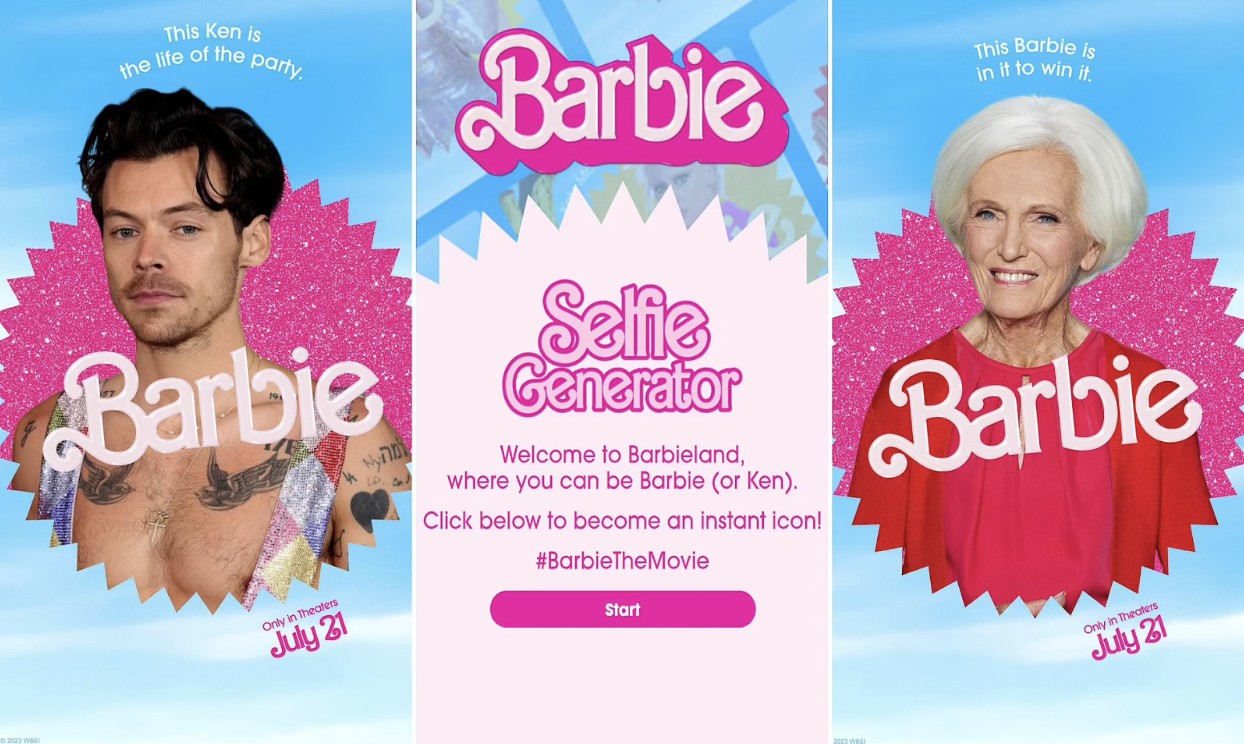Reactive Marketing Strategy is becoming increasingly more important to introduce into today’s marketing strategies. It involves being agile and responsive to real-time events and trends. It is a way for businesses to seize opportunities or address challenges as they arise.
Here is a recent example. A few weeks ago, Taylor Swift was spotted at a Kansas City Chiefs NFL game and speculation started that she and Chief’s star Travis Kelce were dating. Within a few days, paparazzi images surfaced of them driving away in a car together. Once the images were made public, businesses took advantage of the event and hopped on the bandwagon. The NFL even went as far as to change their TikTok bio to include “Taylor was here.”
 Credit: https://www.mirror.co.uk/3am/us-celebrity-news/taylor-swift-fans-suspicious-nfl-31034203
Credit: https://www.mirror.co.uk/3am/us-celebrity-news/taylor-swift-fans-suspicious-nfl-31034203
Another recent example of reactive marketing was the release of the Barbie and Oppenheimer movies on the same date. The public and businesses alike chimed in on this event, commenting on the major difference between these two plots, and on each of these movies separately. For instance, a Barbie selfie generator was created and allowed businesses to add more personality to their brand and take part in the Barbie marketing campaign.
 Credit: https://www.artworkflowhq.com/resources/barbie-brand-campaigns-2023
Credit: https://www.artworkflowhq.com/resources/barbie-brand-campaigns-2023
Reactive marketing can be a powerful tool for building brand awareness, engaging with your audience, and staying relevant in a fast-paced digital landscape. However, it requires a keen eye for trends, quick decision-making, and a thoughtful approach to ensure that your brand’s messages are well-received by your target audience.
Let’s uncover some ways to craft your reactive marketing strategies, so you can stay on top of your game!
1. Identify Case Studies of Successful Reactive Marketing Campaigns
Research a few case studies of successful reactive marketing campaigns and pay attention to how they excelled in this area. Analyze the strategies and tactics used in each case.
2. Discuss your Key Performance Indicators (KPIs)
Measuring the success of your reactive marketing efforts is essential to determining their effectiveness and making data-informed decisions. Some common KPIs for assessing reactive marketing include metrics like engagement rate, reach, click-through rate, and sentiment analysis.
 3. Build a Toolkit of Resources and Assets
3. Build a Toolkit of Resources and Assets
Invest in advanced monitoring and tracking tools that allow you to keep a close eye on social media trends, news, and relevant keywords. Create a library of pre-approved content templates and messaging guidelines. Train your marketing and social media teams in crisis management and real-time response strategies. Establish clear decision-making protocols and workflows for reactive marketing.
4. Develop a Framework for Quick Decision-Making.
Establish clear guidelines and protocols for identifying opportunities and responding to real-time events promptly. Assign specific roles and responsibilities within your marketing team to facilitate quick responses. Designate team members who are responsible for monitoring trends, others for content creation, and some for approval and posting. A well-organized team structure streamlines the reactive marketing process and minimizes bottlenecks.
Why Build and Integrate A Reactive Marketing Strategy?
Reactive marketing is more than just a trend; it’s a strategic approach that empowers businesses to stay agile and engage with their audience in the fast-paced digital landscape. By seizing real-time opportunities and addressing challenges promptly, brands can create a more dynamic and relatable presence.
As you know, the world of marketing is constantly evolving, and being prepared to adapt is key to success. We encourage you to start integrating reactive marketing into your overall communication strategies, even if it’s in small steps. Embrace the power of timely responses, but remember to maintain brand authenticity and sensitivity to the context of the events you engage with.




